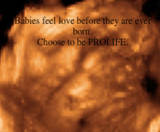What is a birth center?
In general, a birth center is an independent facility designed to give healthy women with low-risk pregnancies the chance to have their babies in a more home-like setting with fewer medical inventions. The centers are often staffed entirely by midwives and doulas (labor assistants) who work closely with obstetricians and pediatricians in case of an emergency.
Birth centers may be located next to or within an actual hospital, but more often are free-standing. (Some hospitals call their delivery area a "birth center" or "birth suite," but free-standing birth centers focus on natural childbirth and usually don't perform surgical procedures or provide epidural anesthesia.)
What defines a birth center depends on individual states' regulations. Centers can differ as well based on their own philosophies. Birth centers can vary widely on certain services such as pain relief. Before you consider using one, it's wise to see what your local birth center offers.
How does a birth center differ from a hospital?
The actual center will most likely resemble someone's home or a cozy bed and breakfast than a hospital or doctor's office. Inside you'll find private rooms with soft lighting, Jacuzzi tubs, and other amenities to help laboring women relax. Many centers even have kitchens where families can prepare their own meals.
Also, birth centers consider childbirth a natural event that doesn't require medical procedures. Although the centers are equipped with supplies like oxygen, IV lines and fluids, infant warmers, resuscitators, and certain kinds of medication, epidurals are usually not available and c-sections are not performed. If you decide you want an epidural, or if complications arise, you'll need to be transferred to a hospital.
Are birth centers safe?
Yes, for healthy women experiencing uncomplicated pregnancies, especially those who have previously had children. In the landmark National Birth Center Study, published in the New England Journal of Medicine in 1989, researchers studied almost 12,000 women with low-risk pregnancies who were admitted to 84 birth centers across the country. Sixteen percent were transferred to a hospital; only 2.4 percent were emergencies. The rate of delivery by cesarean section was 4.4 percent, compared to the national average of nearly one in four deliveries in the hospital, and there were no maternal deaths.
The researchers concluded "that birth centers offer a safe and acceptable alternative to hospital confinement for selected pregnant women, particularly those who have previously had children, and that such care leads to relatively few cesarean sections."
Advantages to hospital birth
Giving birth in a hospital used to mean laboring under bright lights, enduring routine enemas, and being separated from supportive family members. Fortunately, all that has changed. Today most hospitals have modernized their delivery rooms to feel more comfortable and homey.
Many mothers still feel more comfortable giving birth in a hospital. You or your baby would not have to be transported anywhere in case of an emergency and specialists for both you and baby are available immediately.
In addition, for pregnancies that are considered high-risk (if you have diabetes, high blood pressure, or are expecting multiples, for example), hospitals are the safest place to be -- and also the only place c-sections can be performed.
Pain medication and epidurals may not be available at a birth center. If alternative methods of pain relief do not work, you will have to be transferred to a hospital.
Benefits of birth centers
Although hospitals have come a long way, they are still models of standardized care -- meaning that you may have to do things the hospital's way, or at least be prepared to argue for what you want. For example, it may be the hospital's policy that you can't eat during labor, or must have continuous fetal monitoring.
At a birth center, on the other hand, you are welcome to walk around, eat, drink, and give birth in whatever position feels most comfortable to you.
Birth centers are much more intimate and private than hospital maternity wards. If you go to one for your prenatal care, you'll likely get to know all the staff members. And when the time comes to deliver, it's entirely possible that you could be the only woman giving birth at that particular time. As with labor, you may get more individual attention when it comes to learning how to breastfeed.
((http://www.ahealthyme.com/topic/birthcenter))
C-Sections
A C-Section Also known as a Cesarean Section. Is a Abdominal Surgery performed instead of a normal Vaginal Delivery
When first measured in 1965 the rate of C-sections was 4.5% The Latest Measurement was in 2006. and it was 31.1% And it is still going Up.
Doctors Perfer to offer the patient a C-section. It gets them more money. And its over with faster.
But did you know that after mom has her first C-Section. She will almost NEVER be allowed to have a Vaginal Delivery?
A C-Section is a big Surgery. And shouldn't be taken Lightly.
Please, Unless You want Your daughters Future to be this. Or your own.
We need to start thinking about this and start making a protest.
Woman,
We dont need this. We are created to be able to do this!
Unless you NEED a c-section. Dont get one. You will be taking away a precious thing.
Birth is a Joy. Not a Punishment. Treat it like one










